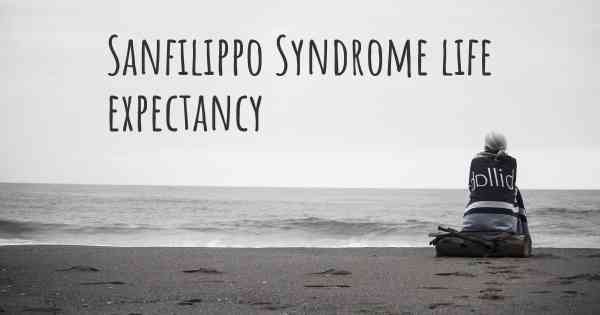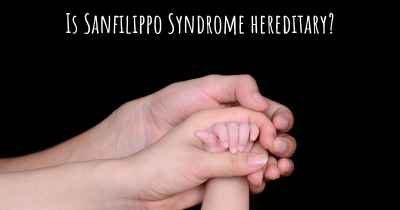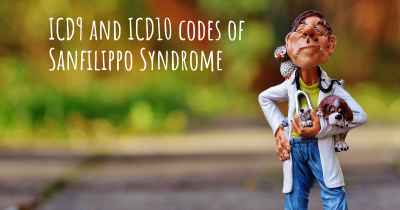What is the life expectancy of someone with Sanfilippo Syndrome?
Life expectancy of people with Sanfilippo Syndrome and recent progresses and researches in Sanfilippo Syndrome

Sanfilippo Syndrome is a rare genetic disorder that affects the body's ability to break down certain sugars. It is a progressive condition that leads to severe neurological symptoms, including developmental regression, hyperactivity, and loss of speech. Unfortunately, life expectancy for individuals with Sanfilippo Syndrome is significantly reduced. Most individuals with this condition do not survive beyond their teenage years or early adulthood. The disease progressively worsens over time, causing significant decline in cognitive and physical abilities. While there is ongoing research and potential treatments being explored, the prognosis for Sanfilippo Syndrome remains challenging. Early diagnosis and supportive care are crucial in managing the symptoms and improving the quality of life for affected individuals.
Sanfilippo Syndrome:
Sanfilippo Syndrome, also known as mucopolysaccharidosis type III (MPS III), is a rare genetic disorder that affects the metabolism of complex sugars called glycosaminoglycans (GAGs). It is a progressive disorder that primarily affects the central nervous system, leading to severe neurological symptoms and a decline in cognitive function.
Types of Sanfilippo Syndrome:
There are four subtypes of Sanfilippo Syndrome, each caused by a different enzyme deficiency:
- Sanfilippo Syndrome Type A (MPS IIIA): Caused by a deficiency of the enzyme heparan N-sulfatase.
- Sanfilippo Syndrome Type B (MPS IIIB): Caused by a deficiency of the enzyme alpha-N-acetylglucosaminidase.
- Sanfilippo Syndrome Type C (MPS IIIC): Caused by a deficiency of the enzyme acetyl-CoA alpha-glucosaminide acetyltransferase.
- Sanfilippo Syndrome Type D (MPS IIID): Caused by a deficiency of the enzyme N-acetylglucosamine 6-sulfatase.
Symptoms and Progression:
Sanfilippo Syndrome typically becomes apparent in early childhood, with symptoms varying depending on the subtype. Common symptoms include:
- Developmental delay
- Hyperactivity
- Aggressive behavior
- Sleep disturbances
- Loss of speech
- Seizures
- Coarse facial features
- Enlarged liver and spleen
- Joint stiffness
The progression of Sanfilippo Syndrome is relentless, with affected individuals experiencing a decline in cognitive abilities and a loss of acquired skills. As the disease progresses, individuals may become wheelchair-bound, experience difficulty swallowing, and develop respiratory problems.
Life Expectancy:
The life expectancy of individuals with Sanfilippo Syndrome varies depending on the subtype and the severity of the symptoms. Generally, individuals with Sanfilippo Syndrome have a reduced life expectancy compared to the general population.
Sanfilippo Syndrome Type A (MPS IIIA) is typically the most severe subtype, with affected individuals having a life expectancy ranging from 10 to 20 years. However, some individuals with MPS IIIA have been known to live into their 30s or 40s, although this is rare.
Sanfilippo Syndrome Type B (MPS IIIB) and Type C (MPS IIIC) have a slightly longer life expectancy compared to Type A. Individuals with MPS IIIB may live into their late teens or early twenties, while those with MPS IIIC may have a life expectancy into their twenties or thirties.
Sanfilippo Syndrome Type D (MPS IIID) is the least severe subtype, and individuals with this subtype may have a slightly longer life expectancy compared to the other subtypes. Some individuals with MPS IIID have been known to live into their forties or fifties.
Treatment and Management:
Currently, there is no cure for Sanfilippo Syndrome. Treatment focuses on managing symptoms and improving the quality of life for affected individuals. This may include:
- Supportive care to manage symptoms such as seizures and sleep disturbances
- Physical and occupational therapy to maintain mobility and independence
- Speech therapy to improve communication skills
- Special education programs tailored to the individual's needs
- Genetic counseling for families
Research is ongoing to develop potential therapies for Sanfilippo Syndrome, including enzyme replacement therapy and gene therapy. These treatments aim to address the underlying enzyme deficiencies and slow down the progression of the disease.
Conclusion:
Sanfilippo Syndrome is a devastating genetic disorder that significantly impacts the lives of affected individuals and their families. The life expectancy of someone with Sanfilippo Syndrome varies depending on the subtype, with Type A being the most severe and having the shortest life expectancy. While there is currently no cure, ongoing research offers hope for potential treatments that may improve the prognosis and quality of life for individuals with Sanfilippo Syndrome.
Posted Nov 6, 2019 by TSF Inc Team Sanfilippo Foundation
Posted Jan 1, 2018 by Danielle 3160
To long life and keeping mobility as long as possible is of great benefit to overall health . Seizures need to be controlled and are often time secondary causes by increased intracranial pressure . Diamox or shunting will help decrease fluid levels for a healthier life !
Posted Feb 25, 2019 by Patty Jesse 3000
Posted Nov 3, 2019 by Anne-marie 2500








